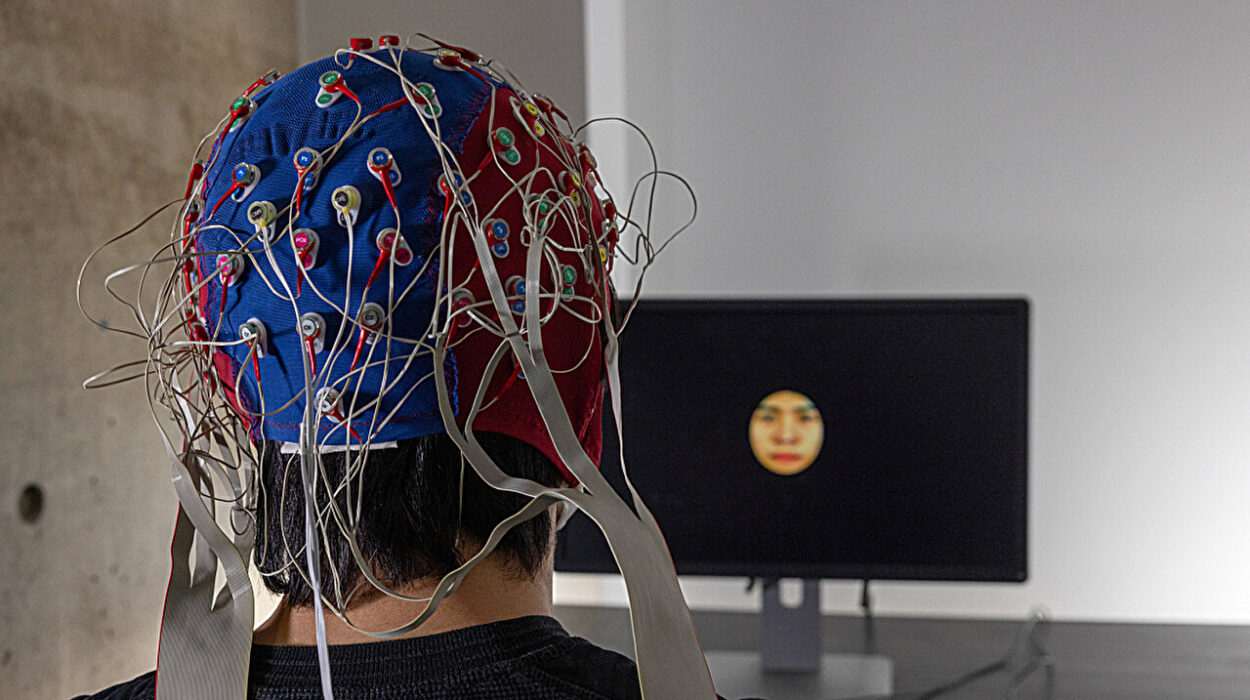In the quiet corridors of Karolinska Institutet in Sweden, a team of researchers has uncovered a hidden mechanism deep within the brain that could explain some of the most perplexing and challenging aspects of human behavior. Their work, published in Science Advances, reveals a neural circuit that can drive compulsive actions, trapping the brain in a kind of “repeat mode.” This discovery could help illuminate the root causes of disorders like obsessive-compulsive disorder (OCD) and addiction, which affect millions of people around the world.
The question that drove their research was deceptively simple: Why do both animals and humans sometimes engage in repetitive behaviors, even when there is no longer any reward or benefit? We’ve all witnessed it—the child who can’t stop fidgeting with the same toy, the adult who checks their phone compulsively, the person stuck in a cycle of addiction. But how does the brain get stuck in these loops, repeating the same actions even when they no longer serve a purpose?
It turns out that the answer lies in a specific brain circuit, one that researchers had never fully understood until now.
A Circuit That Puts Behavior on Repeat
The breakthrough came when the team at Karolinska discovered that a neural pathway involving the nucleus accumbens—a region long known as the brain’s reward center—can become a key player in driving compulsive behavior. This area is linked to our feelings of pleasure and motivation, guiding us to seek out rewards like food, social interactions, and even more abstract desires, like achieving personal goals. But the researchers found that when the circuit between the nucleus accumbens and the hypothalamus—a region that controls many basic functions like hunger and thirst—was activated in a specific way, something unusual happened.
Using optogenetics, a cutting-edge technique that allows scientists to control individual nerve cells with light, the researchers were able to turn on the neural circuit at will. What they discovered was surprising. The activation of this circuit triggered a negative emotional state in the mice that led to repetitive, compulsive actions like digging and sniffing. And this occurred even when food or social rewards were readily available to the animals—essentially, their brains were stuck in a loop, driven to repeat actions that offered no reward.
Konstantinos Meletis, the professor who led the study, explains, “We have identified a brain circuit that can shift behavior into a repetitive mode. This helps us understand how compulsive actions arise and may contribute to insights into conditions such as obsessive-compulsive disorder (OCD) and addiction.”
In other words, the circuit caused the mice to prioritize certain actions over their natural needs, like hunger or social interaction. The act of repeating the behavior became more important than any kind of reward, setting the stage for a deeper understanding of conditions where similar patterns of thought and action persist, even when they are no longer beneficial.
The Role of the Hypothalamus and Habenula
While the nucleus accumbens set the stage for repetitive behavior, the hypothalamus played a crucial role in driving the negative state that made the mice fixate on these actions. This region of the brain, responsible for regulating key bodily functions such as hunger, thirst, and temperature, was found to be intricately connected to the lateral habenula, a small structure involved in processing negative emotions and unpleasant experiences.
The researchers discovered that when they blocked the signal from the hypothalamus to the habenula, the compulsive behaviors in the mice stopped. The compulsive loop was broken. This finding was key because it suggested that the brain has a way of prioritizing certain behaviors over others—especially when those behaviors are no longer functional or rewarding.
As Meletis puts it, “This gives us a new understanding of how the brain can prioritize certain behaviors over others, even when they are not functional or rewarding.” This could explain why people with OCD, for example, continue to perform certain rituals or compulsions despite the absence of any real benefit.
A New Understanding of Compulsive Behavior
To uncover these details, the researchers used a sophisticated mix of genetic tools, brain activity measurements, and optogenetic methods. By identifying and tracking specific nerve cells and observing the resulting behaviors, they were able to map the neural circuit responsible for the compulsive actions.
What they found offers fresh insight into how the brain can become “wired” to repeat actions, even when the rewards are no longer present. It also reveals how different regions of the brain work together to generate these compulsive behaviors. This, in turn, could have significant implications for understanding a range of psychiatric disorders that involve repetitive, seemingly irrational behaviors.
By activating the circuit between the nucleus accumbens and hypothalamus, the researchers were able to shift the mice into a negative emotional state, where they sought out compulsive actions as a response to this feeling. When they turned off the pathway to the habenula, the compulsive actions stopped, suggesting that the circuit was critical in driving the loop.
Why This Discovery Matters
This research is significant not just because it illuminates the mechanisms of compulsive behavior in animals, but because it could have real-world implications for understanding complex human conditions. OCD and addiction are two of the most challenging mental health disorders, and they often involve patterns of compulsive behavior that are difficult to break.
For individuals suffering from OCD, the relentless urge to perform certain rituals can feel like an uncontrollable force, even when they know that these actions are irrational. Similarly, addiction is driven by compulsive behavior, where the brain prioritizes the need for a substance or activity over everything else—even survival. Understanding how the brain “locks” into these patterns could help scientists develop more effective treatments for these conditions, offering hope to those who struggle to break free from these cycles.
The discovery of this brain circuit also opens the door to new approaches in neuroscience, suggesting that by targeting specific brain regions or circuits, we might be able to “reset” these compulsive loops. Whether through medication, behavioral therapy, or advanced neurostimulation techniques, this research offers a potential pathway to help people regain control over their behavior.
Ultimately, the work done at Karolinska Institutet represents a crucial step toward unraveling the complex mysteries of the brain, helping us understand not only how behaviors are formed, but how they can go awry—and how we might fix them.
More information: Thomas Contesse et al, A striosomal accumbens pathway drives stereotyped behavior through an aversive Esr1+ hypothalamic-habenula circuit., Science Advances (2025). DOI: 10.1126/sciadv.adx9450. www.science.org/doi/10.1126/sciadv.adx9450






